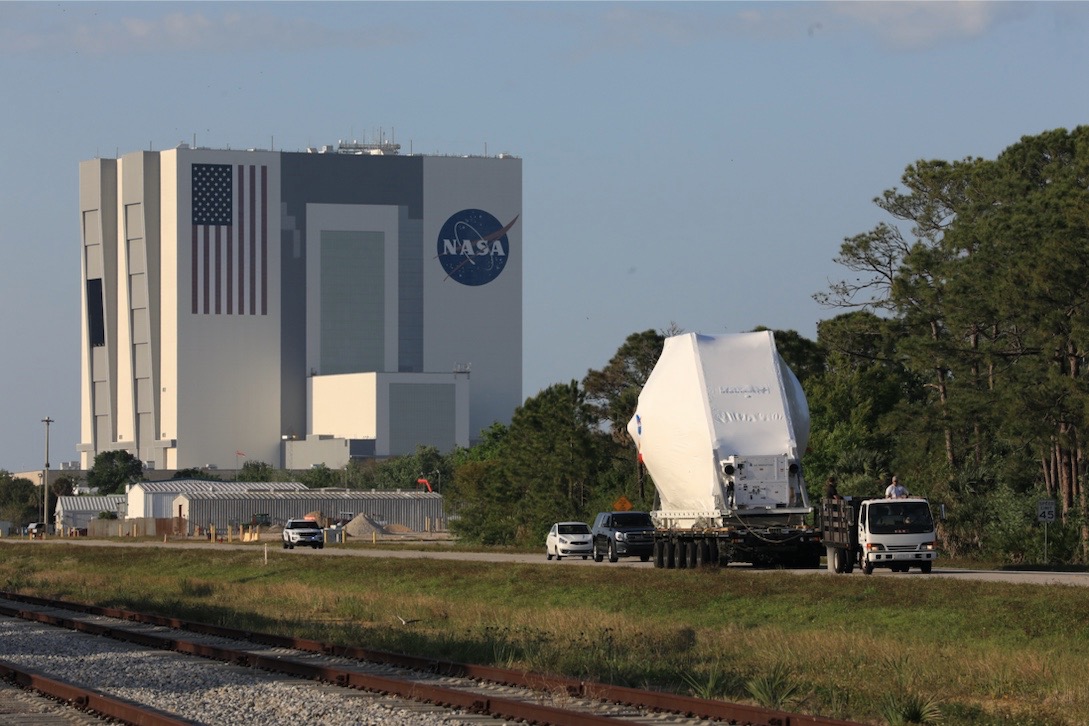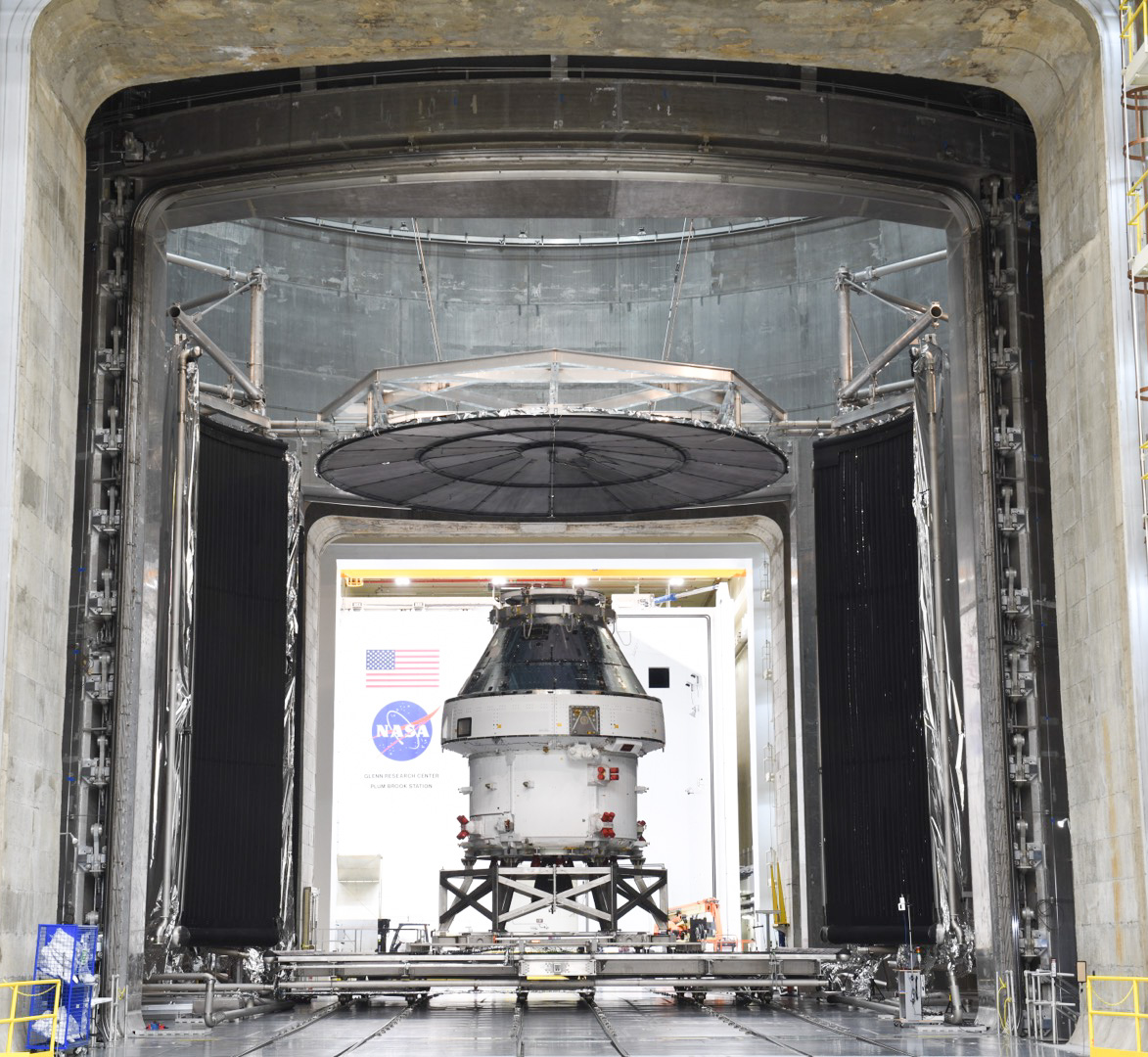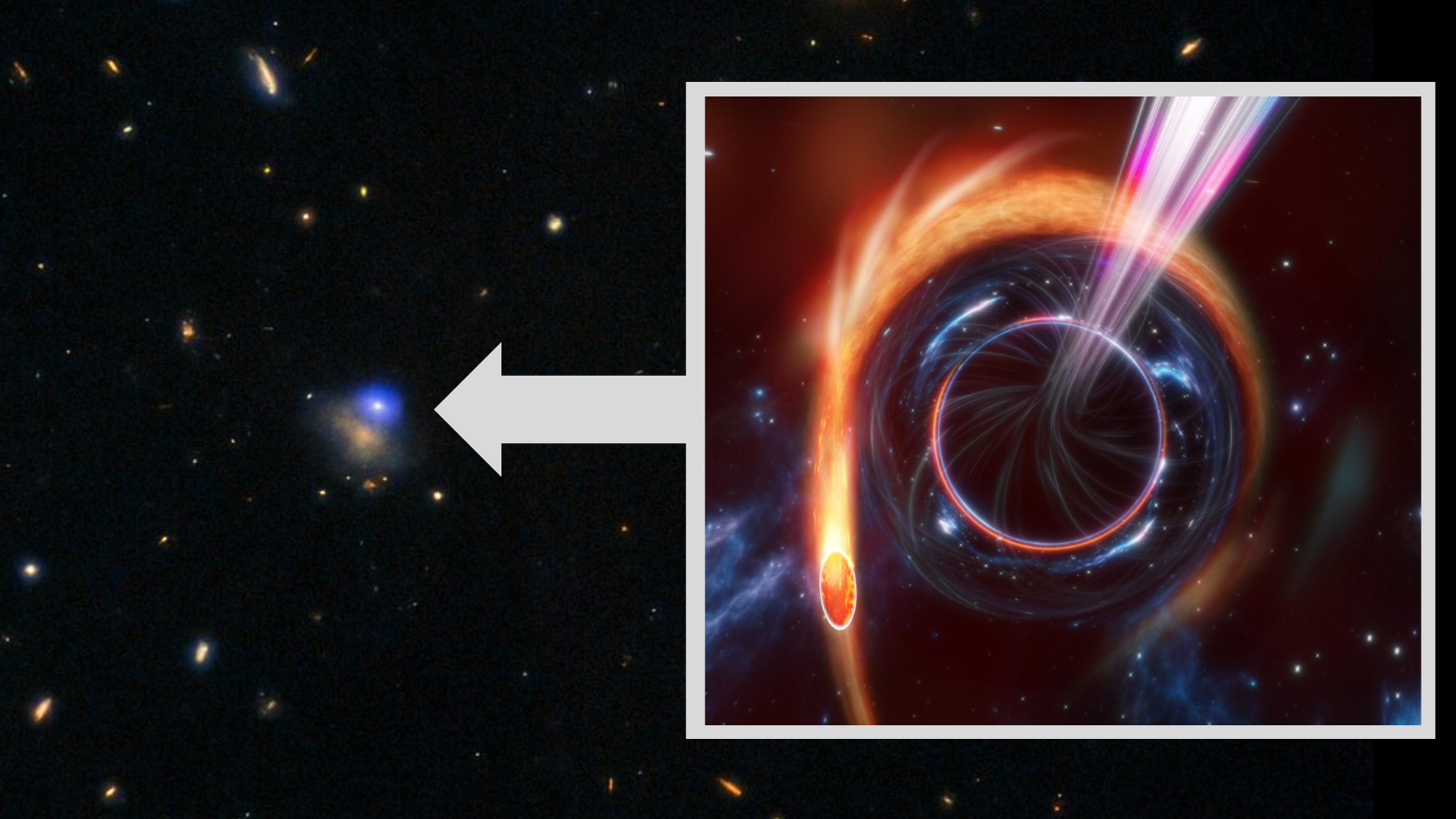NASA's Orion crew capsule arrives in Florida to prep for test flight around moon (photo)

A NASA Orion crew capsule has made it to its Florida launch site ahead of a landmark 2021 mission around the moon.
Orion arrived at NASA's Kennedy Space Center (KSC) yesterday (March 25) after flying from Ohio to Florida aboard the agency's Super Guppy transport plane, NASA officials said.
The capsule had been in Ohio for the past four months, undergoing testing in the world's biggest space-simulation vacuum chamber at NASA's Plum Brook Station. During these tests, engineers subjected Orion to extreme temperatures that ranged from minus 250 degrees to plus 200 degrees Fahrenheit (minus 160 to 90 degrees Celsius) and made sure the capsule's various systems worked properly in the types of electromagnetic environments it will experience off Earth.
Related: The Orion space capsule: NASA's next spaceship (photos)
The test campaign "went exceptionally well, especially considering we were doing all of this for the first time," Nicole Smith, testing project manager at NASA’s Glenn Research Center in Ohio, said in a statement. (Plum Brook Station is a test facility operated by NASA Glenn.)
"We found a lot of efficiencies throughout the thermal vacuum phase and overcame a few facility equipment challenges early during electromagnetic interference testing, but our combined NASA, Lockheed Martin, ESA (European Space Agency) and Airbus team was able to complete the testing ahead of schedule," Smith added.
At KSC, Orion will endure a final round of processing and testing. It will then be stacked atop NASA's Space Launch System (SLS) megarocket for Artemis 1, an uncrewed mission around the moon that's scheduled to lift off in mid-2021.
Breaking space news, the latest updates on rocket launches, skywatching events and more!

Artemis 1 will be the first flight for SLS and the second for Orion, which aced an uncrewed test flight to Earth orbit in December 2014 that launched atop a United Launch Alliance Delta IV Heavy rocket.
If all goes according to plan, Orion and SLS will fly again in 2022, on the Artemis 2 mission. Artemis 2, another round-the-moon flight, will be the first crewed mission for Artemis, NASA's new lunar exploration program. Artemis 3 will land two astronauts near the moon's south pole in 2024. (This aggressive timeline, like many other projects around the world, might end up being affected by the coronavirus pandemic. For example, NASA has had to halt some key SLS production and testing work because of the outbreak.)
The moon is not the be-all, end-all for Artemis. NASA views the program as a steppingstone to Mars, helping pave the way for crewed Red Planet missions in the 2030s.
"With Orion back at Kennedy, we're ready," Scott Wilson, NASA Orion production operations manager, said in the same statement. "Ready to finalize the vehicle and send it to be integrated for its voyage to deep space, tackling the next era of human space exploration."
- NASA's Artemis program
- Orion explained: NASA's multipurpose crew vehicle (Infographic)
- Space Launch System: NASA's giant rocket explained (Infographic)
Mike Wall is the author of "Out There" (Grand Central Publishing, 2018; illustrated by Karl Tate), a book about the search for alien life. Follow him on Twitter @michaeldwall. Follow us on Twitter @Spacedotcom or Facebook.
OFFER: Save at least 56% with our latest magazine deal!
All About Space magazine takes you on an awe-inspiring journey through our solar system and beyond, from the amazing technology and spacecraft that enables humanity to venture into orbit, to the complexities of space science.

Michael Wall is a Senior Space Writer with Space.com and joined the team in 2010. He primarily covers exoplanets, spaceflight and military space, but has been known to dabble in the space art beat. His book about the search for alien life, "Out There," was published on Nov. 13, 2018. Before becoming a science writer, Michael worked as a herpetologist and wildlife biologist. He has a Ph.D. in evolutionary biology from the University of Sydney, Australia, a bachelor's degree from the University of Arizona, and a graduate certificate in science writing from the University of California, Santa Cruz. To find out what his latest project is, you can follow Michael on Twitter.

